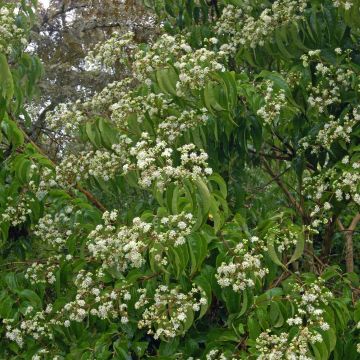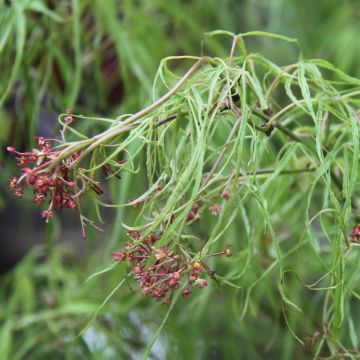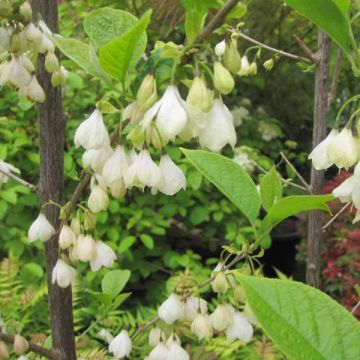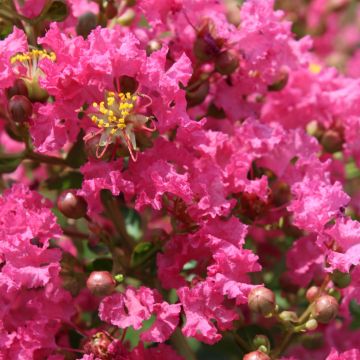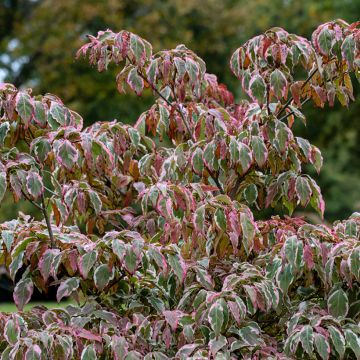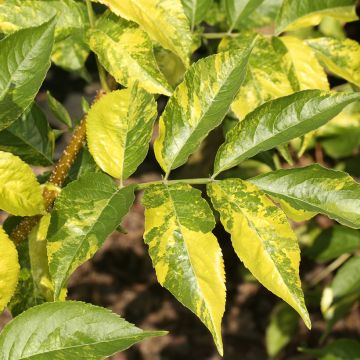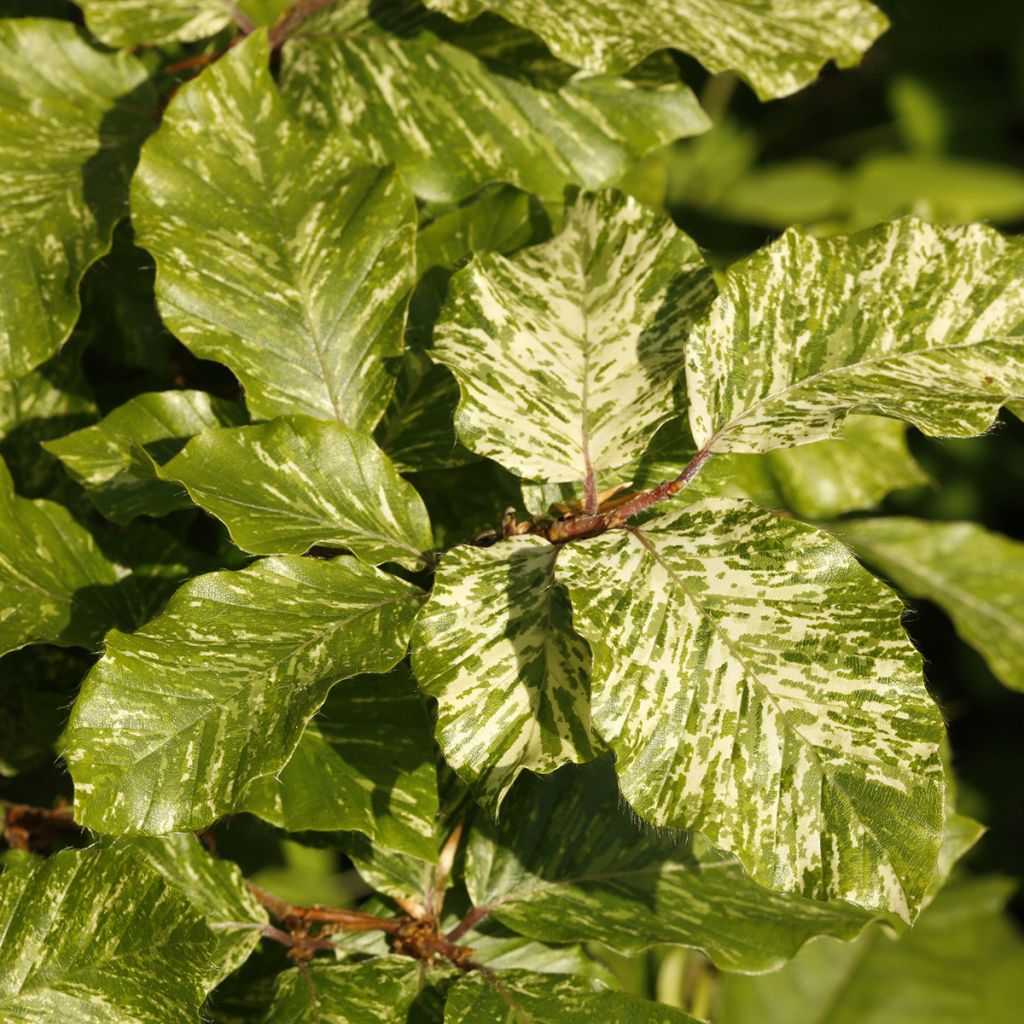

Fagus sylvatica Franken - Beech
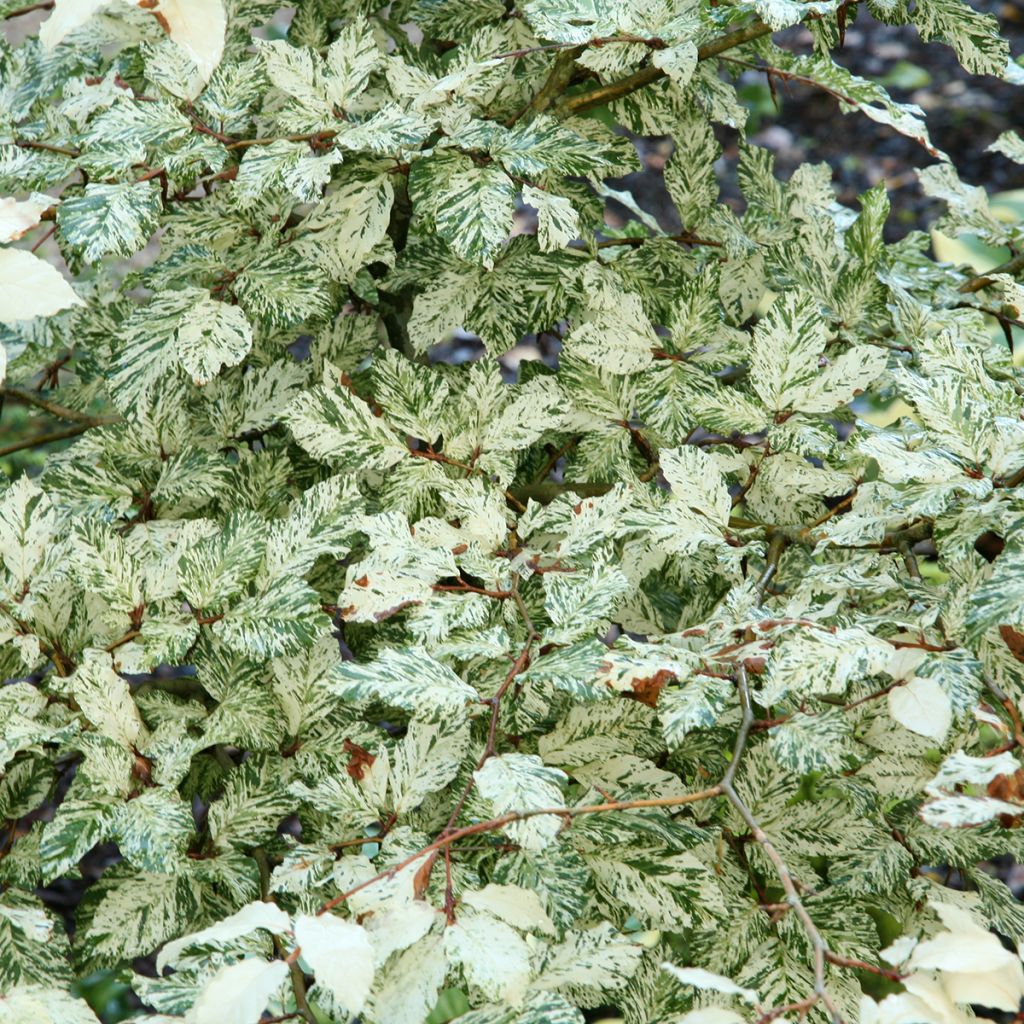

Fagus sylvatica Franken - Beech
Fagus sylvatica Franken - Beech
Fagus sylvatica Franken
European Beech, Common Beech
Special offer!
Receive a €20 voucher for any order over €90 (excluding delivery costs, credit notes, and plastic-free options)!
1- Add your favorite plants to your cart.
2- Once you have reached €90, confirm your order (you can even choose the delivery date!).
3- As soon as your order is shipped, you will receive an email containing your voucher code, valid for 3 months (90 days).
Your voucher is unique and can only be used once, for any order with a minimum value of €20, excluding delivery costs.
Can be combined with other current offers, non-divisible and non-refundable.
Home or relay delivery (depending on size and destination)
Schedule delivery date,
and select date in basket
This plant carries a 24 months recovery warranty
More information
We guarantee the quality of our plants for a full growing cycle, and will replace at our expense any plant that fails to recover under normal climatic and planting conditions.
Would this plant suit my garden?
Set up your Plantfit profile →
Description
Fagus sylvatica 'Franken' is a slow-growing bush or small tree, reaching a height of 1.5 to 2 m after 15 to 20 years. Its foliage is colourful and its silhouette graceful. The leaves are highly variegated, mainly speckled with green. It is also loved for its marcescent brownish foliage that remains dense on the branches until spring. Its long lifespan deserves a prime location in the garden. It prefers rich and well-drained soils but does not tolerate intense sunlight. Discreet yellow-green flowers appear in spring and are followed in autumn by decorative fruits called beech-nuts. This beech tree brightens up shade with its green foliage marbled with cream-white that can turn pink in autumn. It is a rarity and a must-have for lovers of variegated plants!
Fagus sylvatica, commonly known as common beech, is a deciduous tree species native to Europe and belongs to the Fagaceae family, like oak and chestnut. It is one of the main forest species in deciduous temperate forests in Europe. It is found in pure beech forests and, more often, with other species in leafy forests, mainly with the European oak or in mixed forests with the silver fir or common spruce. It is an indication of a humid temperate climate. Foresters use it to produce timber for furniture and, in mountainous areas, for firewood.
The 'Franken' variety originates from Germany in the 1990s. It comes from a selected seedling of Fagus sylvatica 'Marmorata'. With a long lifespan, it forms a small, dense and branching tree with a conical or fastigiate habit. It grows very slowly and can reach a height of 2 to 3 m and a spread of 1.50 to 2 m at the age of 20 to 30 years. The branches are smooth and reddish-brown. The leaves are alternate, petiolate, ovate, 4 to 8 cm long, wavy on the leaf margin. In the early years, the foliage is green, then as the plant establishes itself, the leaves become white with green spots. In spring, they are sometimes pure white, while as summer approaches, the green becomes more visible. In autumn, the foliage takes on yellowish-brown hues and remains on the tree throughout winter, only falling when new leaves appear. In spring, around April-May, there is a discreet and quite insignificant flowering. The male flowers, grouped in pendulous catkins of 40 to 60 mm, are pale yellow, while the green female flowers are grouped in 2 to 4 at the ends of the branches. In autumn, the beech nuts begin to appear in prickly woody husks.
The variegated beech tree is a very robust and cold-resistant tree (down to -30°C). Its elegant silhouette and colourful foliage are major assets that make this variety a unique element in the landscape. It can adapt to small gardens, terraces, and patios, and will thrive in well-drained soil, rich in humus, slightly acidic to alkaline. A sunny exposure is preferable, but it can also tolerate a slightly shaded area. However, be cautious of stagnant water and excessive heat, as they could be harmful to it. Its incredible hardiness makes it one of the best substitutes for Japanese maple during very harsh winters. Paired with other varieties of shrubs with varied foliage, it will bring refinement and elegance to your garden.
Report an error about the product description
Fagus sylvatica Franken - Beech in pictures
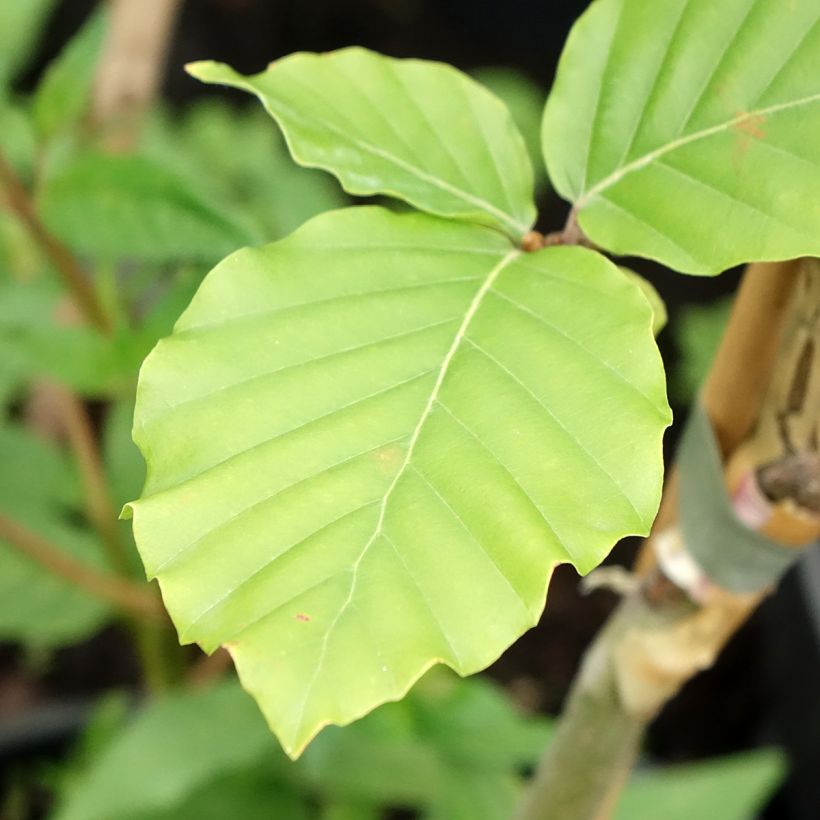

Plant habit
Flowering
Foliage
Botanical data
Fagus
sylvatica
Franken
Fagaceae
European Beech, Common Beech
Central Europe
Planting and care
Plant your Franken Fagus sylvatica in autumn or spring, choose an open location, in non-scorching sun, where the soil is deep and keep in mind the space it will take up in the long term. If necessary, create a drainage pit with stones if your soil is suffocating. If your soil is poor, add leaf compost. Maintain regular watering during the summer following planting and make sure to protect it from prolonged droughts for another year, mulching can help keep the base moist and space out watering. It is important to keep in mind that this tree needs consistently moist soil, at least at depth. It is perfectly frost-resistant. In February-March, when the tree is dormant, prune to balance the shape of the tree by aerating the centre of the canopy every 3 years or so. Watch out for aphids, scale insects, and mildew.
The Franken Fagus sylvatica can be planted in an outdoor container. Choose a container of at least 30 to 50L. Make sure the container has drainage holes and create good drainage by filling the bottom with a thick layer of clay balls or gravel. In pots, they naturally require more regular watering. In winter, move them to a sheltered place away from the wind and significantly reduce watering.
In pots, nutrient reserves deplete quickly. In spring, every year, to maintain healthy foliage, apply 1 to three handfuls of organic fertiliser (decomposed manure, compost, Horn, blood, and specific fertilisers) all at once. Then, at least every two years, surface dressing should be done, which involves replacing the topsoil with fresh soil.
Planting period
Intended location
Care
This item has not been reviewed yet - be the first to leave a review about it.
Similar products
Haven't found what you were looking for?
Hardiness is the lowest winter temperature a plant can endure without suffering serious damage or even dying. However, hardiness is affected by location (a sheltered area, such as a patio), protection (winter cover) and soil type (hardiness is improved by well-drained soil).

Photo Sharing Terms & Conditions
In order to encourage gardeners to interact and share their experiences, Promesse de fleurs offers various media enabling content to be uploaded onto its Site - in particular via the ‘Photo sharing’ module.
The User agrees to refrain from:
- Posting any content that is illegal, prejudicial, insulting, racist, inciteful to hatred, revisionist, contrary to public decency, that infringes on privacy or on the privacy rights of third parties, in particular the publicity rights of persons and goods, intellectual property rights, or the right to privacy.
- Submitting content on behalf of a third party;
- Impersonate the identity of a third party and/or publish any personal information about a third party;
In general, the User undertakes to refrain from any unethical behaviour.
All Content (in particular text, comments, files, images, photos, videos, creative works, etc.), which may be subject to property or intellectual property rights, image or other private rights, shall remain the property of the User, subject to the limited rights granted by the terms of the licence granted by Promesse de fleurs as stated below. Users are at liberty to publish or not to publish such Content on the Site, notably via the ‘Photo Sharing’ facility, and accept that this Content shall be made public and freely accessible, notably on the Internet.
Users further acknowledge, undertake to have ,and guarantee that they hold all necessary rights and permissions to publish such material on the Site, in particular with regard to the legislation in force pertaining to any privacy, property, intellectual property, image, or contractual rights, or rights of any other nature. By publishing such Content on the Site, Users acknowledge accepting full liability as publishers of the Content within the meaning of the law, and grant Promesse de fleurs, free of charge, an inclusive, worldwide licence for the said Content for the entire duration of its publication, including all reproduction, representation, up/downloading, displaying, performing, transmission, and storage rights.
Users also grant permission for their name to be linked to the Content and accept that this link may not always be made available.
By engaging in posting material, Users consent to their Content becoming automatically accessible on the Internet, in particular on other sites and/or blogs and/or web pages of the Promesse de fleurs site, including in particular social pages and the Promesse de fleurs catalogue.
Users may secure the removal of entrusted content free of charge by issuing a simple request via our contact form.
The flowering period indicated on our website applies to countries and regions located in USDA zone 8 (France, the United Kingdom, Ireland, the Netherlands, etc.)
It will vary according to where you live:
- In zones 9 to 10 (Italy, Spain, Greece, etc.), flowering will occur about 2 to 4 weeks earlier.
- In zones 6 to 7 (Germany, Poland, Slovenia, and lower mountainous regions), flowering will be delayed by 2 to 3 weeks.
- In zone 5 (Central Europe, Scandinavia), blooming will be delayed by 3 to 5 weeks.
In temperate climates, pruning of spring-flowering shrubs (forsythia, spireas, etc.) should be done just after flowering.
Pruning of summer-flowering shrubs (Indian Lilac, Perovskia, etc.) can be done in winter or spring.
In cold regions as well as with frost-sensitive plants, avoid pruning too early when severe frosts may still occur.
The planting period indicated on our website applies to countries and regions located in USDA zone 8 (France, United Kingdom, Ireland, Netherlands).
It will vary according to where you live:
- In Mediterranean zones (Marseille, Madrid, Milan, etc.), autumn and winter are the best planting periods.
- In continental zones (Strasbourg, Munich, Vienna, etc.), delay planting by 2 to 3 weeks in spring and bring it forward by 2 to 4 weeks in autumn.
- In mountainous regions (the Alps, Pyrenees, Carpathians, etc.), it is best to plant in late spring (May-June) or late summer (August-September).
The harvesting period indicated on our website applies to countries and regions in USDA zone 8 (France, England, Ireland, the Netherlands).
In colder areas (Scandinavia, Poland, Austria...) fruit and vegetable harvests are likely to be delayed by 3-4 weeks.
In warmer areas (Italy, Spain, Greece, etc.), harvesting will probably take place earlier, depending on weather conditions.
The sowing periods indicated on our website apply to countries and regions within USDA Zone 8 (France, UK, Ireland, Netherlands).
In colder areas (Scandinavia, Poland, Austria...), delay any outdoor sowing by 3-4 weeks, or sow under glass.
In warmer climes (Italy, Spain, Greece, etc.), bring outdoor sowing forward by a few weeks.

































